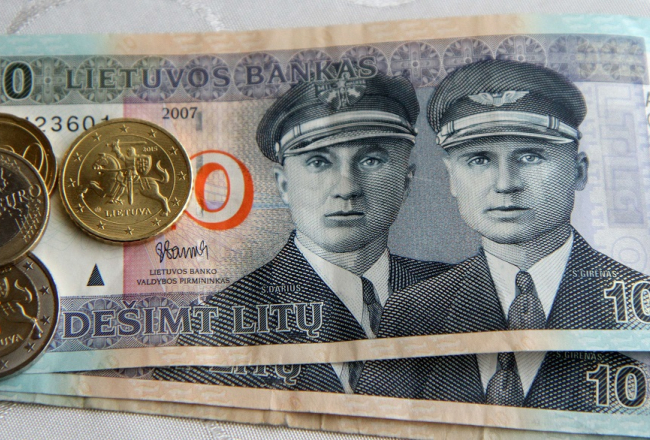
Lietuvas liti un jaunās eiro monētas. Foto: AFP/LETA
On 1 January 2015 Lithuania joined the euro zone and for the first time since April 1992 all three Baltic countries again share the same currency.
Lithuania's choice to join is highly logical, given its strong trade links with other euro zone countries, not least the other Baltic ones.
But what to expect from the euro in 2015? The euro has weakened against most currencies in 2014, notably against the dollar, see the not-too-reader-friendly Figure 1, from some 1.37 USD per EUR at the beginning of 2014 to some 1.20 USD per EUR at the end of 2014, i.e. the euro has depreciated by about 10% against the dollar.
Figure 1: USD per EUR, 1 January 2014 - 5 January 2015
Source: European Central Bank
Reason for concern? No. a) It is a return to its average value against the dollar, see Figure 2. The euro has possibly been too strong vis-à-vis the dollar and this is now being corrected, b) it reflects a stronger American economy where interest rates may rise this year, which strengthens the dollar and, c) it is a deliberate move from the European Central Bank since a weaker euro at the moment may help to solve two problems for the euro zone: Too low inflation and too little growth.














